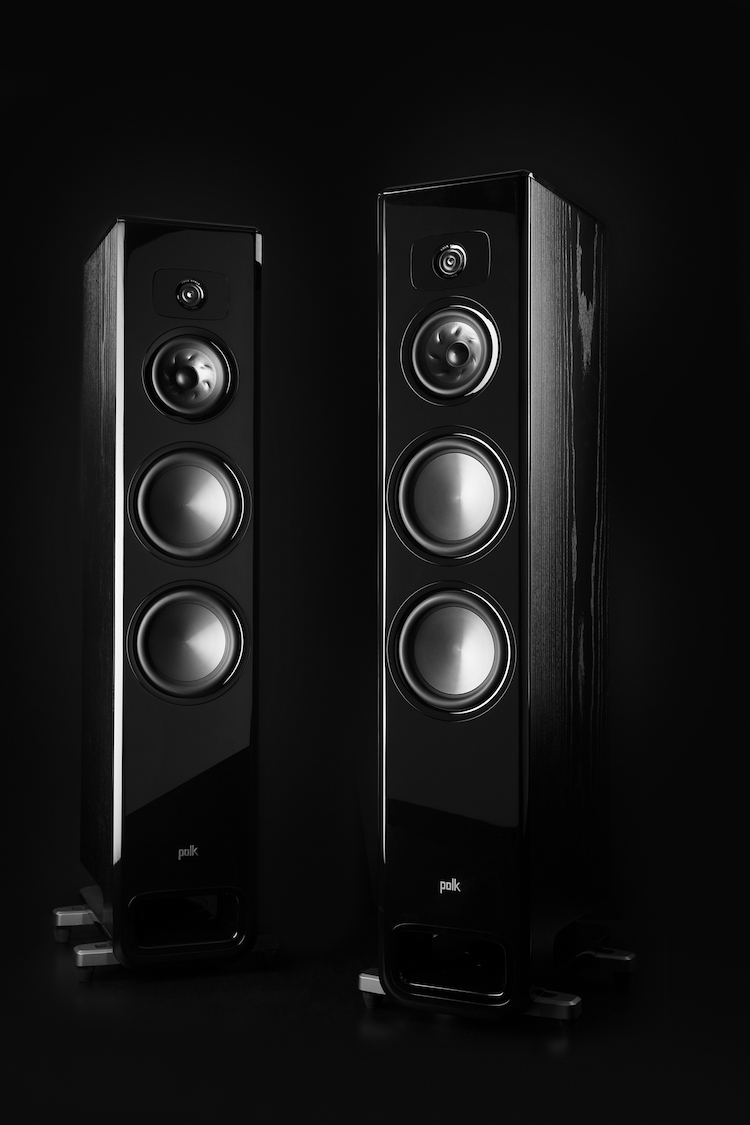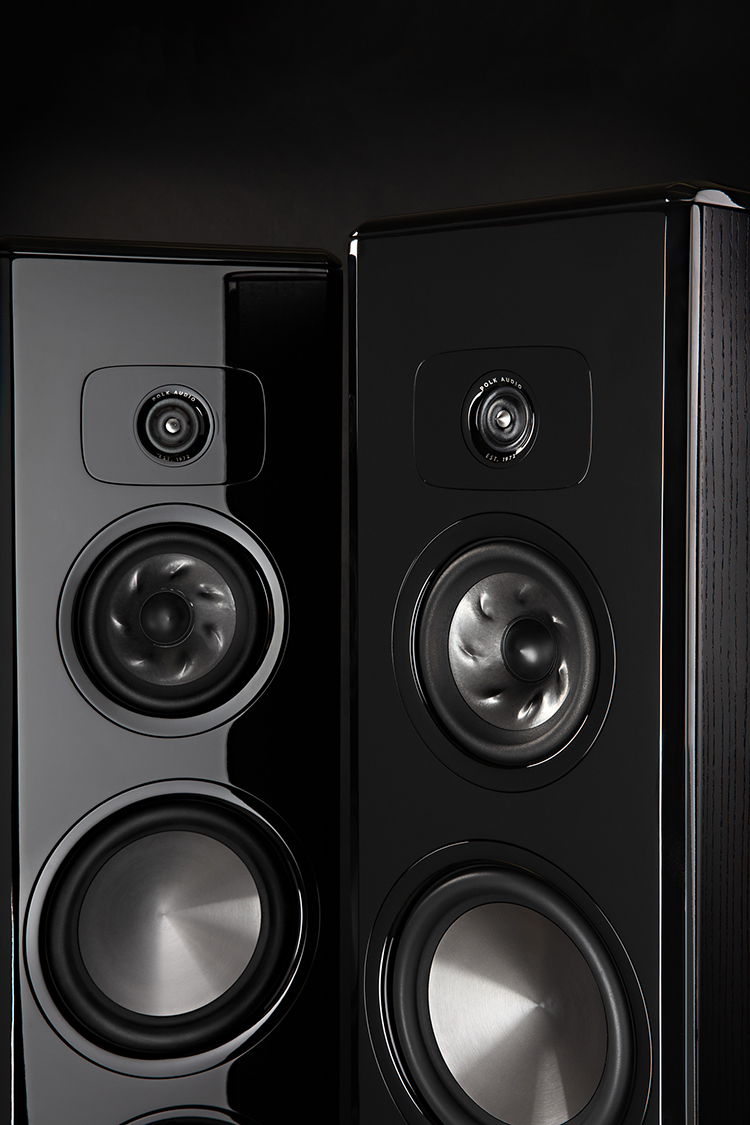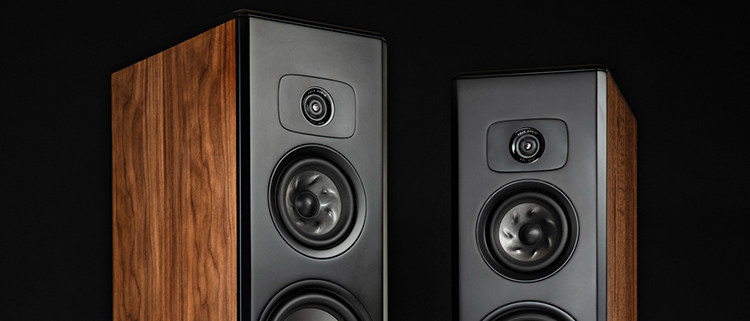
The engineers at Polk Audio have taken more than 45 years’ worth of experience developing loudspeakers and put them all into the new Legend series. Well, I’m going to put those claims to the test, with a series of amplifiers, pre-amplifiers, and all in one weirdly shaped room.
Such big. Such shiny. Such heavy. And such, such bass.
The L600 tower speakers are second from the top of Polk Audio’s Legend series premium floorstanding tower speakers. They weigh 78 pounds each and are 4 feet tall. They feature a 1-inch Pinnacle Ring Radiator tweeter, a 5.25-inch Turbine Cone midrange driver, and two 7-inch mid/woofer drivers. They present a 4-ohm load, are 86 dB sensitive, and can play from 28 Hz to 50,000 Hz. And they retail for $1,999 each.
But it’s the driver enclosure type that’s most interesting to me: the enclosure is power port bass vented with a sealed midrange. An enhanced power port. For enhanced bass. How will that work out? My listening room is rather small with irregularly shaped entrances, and it has a bit of a bass suckout. How well will the L600 speakers energize my room, and will the bass be muddy or magnificent?
What I’ve heard of them so far is quite impressive. I immediately heard dimensions of familiar music I’ve never heard in my listening room. So I will be powering the Polk Audio L600 speakers with different amplifiers and determining just how easy or difficult it is to dial them into an unusual room.
The Polk Audio Legend L600 speakers cost $4,000 per pair, not an easy purchase for a lot of people. But for that price, you get a very good pair of floorstanding loudspeakers with built-in subwoofers. You will get excellent sound quality and prodigious bass, all in very attractive and solidly-built cabinets. You can bi-wire or bi-amp them, and you can easily add modules for home theater. You really do get quite a lot for the price.
Polk Audio Legend L600 Speaker
- Elegant and very resonance-resistant enclosures
- The Polk Audio Legend L600 speakers produce prodigious bass, so you don’t need a separate subwoofer
- Can be bi-wired or bi-amped
- Can be turned into surround-sound speakers with the addition of the L900 Height Modules
- 86db sensitivity
- 4-ohm impedance
- Recommended power requirement is 100W
- Limited 5-year warranty
- Available in Brown Walnut or Black Ash finishes
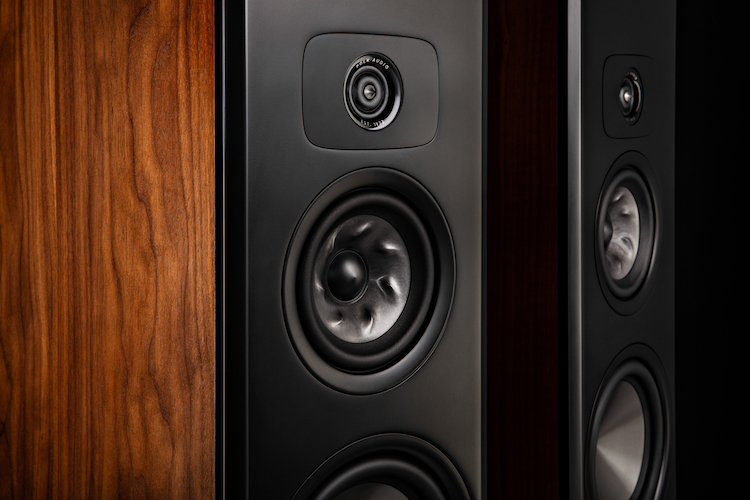
SENSITIVITY:
IMPEDANCE:
4-ohm sensitivity (3.3-ohm minimum)
MFR:
Frequency response: 34Hz to 38,000Hz (-3dB)
Overall frequency response: 20Hz to 50,000Hz
DRIVERS:
1-inch ring radiator tweeter
5.25-inch midrange/mid-bass driver in sealed port
Two 7-inch woofers in enclosed Power Port
CROSSOVER:
Tweeter/midrange crossover frequency: 2.9 kHz
Midrange/midbass crossover frequency: 410 Hz
RECOMMENDED AMPLIFIER POWER:
100W
INPUTS:
Three pairs of binding posts; can be bi-amped or bi-wired
FEET:
Rubber feet and floor spikes
WEIGHT:
78 lbs. (36 kg)
DIMENSIONS (D, H, W):
15.9″ (40.39 cm) x 46.69″ (118.59 cm) x 12.96″ (32.92 cm)
AVAILABLE FINISHES:
Brown Walnut or Black Ash
MSRP (EACH):
$1999
Company:
SECRETS Tags:
Speak Review 2020, Polk Audio, L600, tower, speakers, bass port, bi-wire, bi-amp, floorstanding Speaker Reviews 2020
First, some history. Some 25 years ago Polk Audio introduced the audio and home theater world to their Stereo Dimensional Array (SDA) technology. The folks at Polk sought to address the phenomenon known as inter-aural crosstalk, which makes it difficult for our ears and brains to create the illusion of three-dimensional sound. Polk Audio dealt with this problem by positioning additional drivers in a loudspeaker to deliver precisely derived cancellation signals to the listener’s ears. They called this solution SDA, and it enabled the listener to hear individual instruments across a wide stage, essentially as it appears in the recording’s natural soundstage.
Polk Audio delivered SDS-SRS (Signature Reference System) in 1985 and SRT (Signature Reference Theater) in 1996. They are clearly committed to this technology to bring the best imaging sound they can to the consumer’s listening room and home theater. Polk Audio’s new implementation of this solution is called SDA-Pro, and it’s utilized in their top-of-the-line L800 floorstander loudspeakers ($6,000 per pair) and their soundbars.
This, of course, presents quite an advantage not only to music playback but home theater as well.
While the Legend L600 speakers I’m reviewing do not have the array of drivers required for SDA, they do benefit from all of Polk Audio’s design experience. Each L600 uses four drivers per cabinet. On top is a 1-inch Pinnacle Ring Radiator tweeter. Below that is a 5.25-inch Turbine Cone driver handling the midrange and mid-bass frequencies. And the lowest frequencies are handled by two 7-inch woofers. All of these are mounted in a heavily braced enclosure carefully engineered to minimize unwanted internal standing waves. The big black L600s stood like monoliths in my listening room and essentially disappeared. Lightly thumping the cabinets with my knuckles produced the impression of mass and solidity.
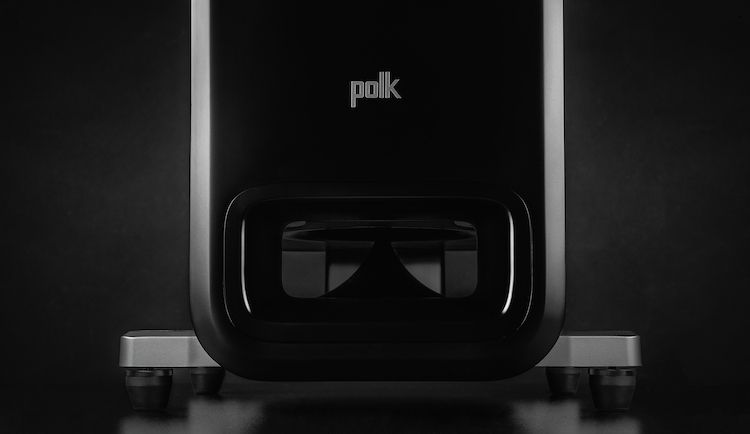
Polk Audio utilizes an Enhanced Power Port to deal with lower-frequency challenges. At the bottom front of each cabinet is an exposed port. Behind that port and under the cabinet is an upward-facing graduated cone. According to Polk Audio, the problem with regular cabinet ports is that the lower and louder they play, the more turbulence and noise they create. And this can and will blur bass detail. To solve this problem, Polk engineers developed the Enhanced Power Port, which allows bass energy airflow to transition smoothly from the speaker, which provides cleaner, louder, and tighter bass. My listening tests were surprising. I had no idea two 7-inch woofers could produce such prodigious bass, and I had no idea bass could be so loud and tight in my room.
The pair I’m reviewing have black ash cabinets. The top and face of the speakers are a smooth black plastic. The sides and rear are a single piece of black ash, and there are no visible seams. The finish on the wood is matte, but the finish still allows the wood grain to be seen. When the light catches the wood grain just right they are quite attractive. Each speaker has a black baffle that attaches to its front with strong magnets.
On the back of each L600 are three sets of speaker terminals. They are quite hefty and provide a very solid mechanical connection with speaker cables. They are also given plenty of space; no need to worry about using thick speaker cables with these speakers. The topmost pair of terminals is for the L900 Height Modules, and the lower two are for the L600s. Polk Audio ships the speakers with hefty wire jumpers installed.
Secrets Sponsor
Another great feature is the speakers’ adjustable and convertible feet. If the speakers rest on an uneven surface, you can use the included Allen key to adjust one of the feet to stabilize the speaker. The feet themselves are spikes with rubber feet over them. Just remove the rubber feet to use the spikes.
And if you want a surround-sound experience, you need only purchase and install the Polk Audio L900 Height Modules. Each L900 module is a set of drivers you install onto the top of the L600s’ cabinets. The L900 modules’ tweeters and woofers are oriented horizontally, to ensure phase and time alignment and a wide sweet spot for immersive listening. You remove four Allen screws and remove the plate from the top of the L600s, then drop in the L900 modules. You then run the speaker cable from your home theater receiver to the L900s’ separate terminals on the back of the L600s.
With the L900 modules installed, a pair of L600s can then be used as front stage or as side and rear surrounds in a home theater setup. Just feed them a signal encoded with Auro-3D, Dolby Atmos, Dolby Atmos Height Virtualization Technology, DTS, DTS:X, DTS:X Virtual, or IMAX Enhanced and you’re good to go.
Consider yourself warned; setting up these speakers is a two-person job. They weigh 78 lbs. each, so getting them out of their boxes took a fair amount of muscle and coordination. They come very well packed with their feet already installed, so there is essentially no assembly required. Their feet are not only substantial but adjustable and convertible. First, you set the speakers in their preferred location, and if they’re not level, you can turn the appropriate foot to stabilize the speaker. Before you do that, you’ll want to decide if you want the speakers to rest on their rubber feet or floor spikes. The rubber feet are installed by default; to convert them to floor spikes you simply remove the rubber feet. That’s a neat idea. Considering the weight of these speakers, if you’re going to use the floor spikes, I’d recommend a heavy grounding base under each one.
I also wouldn’t remove the rubber feet until you’ve decided on the best room placement for the speakers. I put the L600s in the same place all my other speakers have resided and found them rather easy to place. Which is good news, considering their weight. The included documentation makes no distinction between the speakers whether they should be used on the left or right side, for what it’s worth.
My listening room is 13 feet long, 12 feet wide and has 8-foot tall ceilings. On both sides of the room is a walkway; the one on the left is in the shape of a door, and the one on the right is in the shape of an arch and is bigger than the door. This irregularity presents particular challenges with speaker placement; the bigger opening on the right causes an imbalance in the amount of wall space a speaker in that corner has to reflect soundwaves off of. Depending on the amplifier I’m using, I occasionally have to send more power to the right channel to get a correct sound energy balance in my listening spot, which is about twelve feet away from the speakers.
Speakers in my listening room are placed on an MDF board with rollers attached. This places my speakers 3.5 inches above my tiled floor. While that’s not the most elegant solution, it is necessary, because the rack where my components reside is very heavy and I have to move the speakers out of the way to get to the back of the components. With the speakers on my homemade contraption, I can simply roll them out of the way. I kept the rubber feet on the speakers for my initial listening.
I currently have a Schiit Vidar amp and Freya + preamp in my system (reviews to come), so that’s what I used to power the L600s at first. I wanted to start the review with as simple a configuration as possible, so I attached my Crimson speaker cables to the substantial banana receptacles on the back of the L600s and powered it all up. I, of course, kept the jumpers installed. (I figured I would learn a bit about bi-amping and bi-wiring before I tried it. There’s more on that later.)
The Schiit Vidar produces 200W per channel for a 4-ohm load, so this well exceeded Polk Audio’s 100W minimum power recommendation for the L600s. And it was quite a good match. The L600s received more than enough power to play music without any hint of strain, and the Vidar didn’t break a sweat.
I did roll the L600s around a bit, trying to optimize their placement. I used a laser pointer to orient the tweeters to point to the location of my head in my listening spot while moving the speakers away from and toward the corners in which they’re placed. I found that the placement of the center image benefitted from the left/right placement of the tweeters, but the sweet spot was quite wide. Wider than what I’m used to with other speakers I’ve had in my listening room. I’d imagine that’s the result of having more bass energy; the spatial images of the L600s was more “grounded” by the bass they produced.
Alright, let’s just get this out of the way. These Polk Audio Legend L600 speakers make bass. A whole lot of butt-shaking, window-rattling bass. For the first time, there was enough bass in my room to make the windows rattle. I was well chuffed to hear the window behind me chuffing. It was so good I almost fell out of my sofa. This is really not something I am used to; I’ve had speakers in the past which produced a fair amount of bass, but it lacked so much focus it really didn’t improve the imaging. It’s one thing to add a component to your system that enables you to hear a lot more of the inner details of a recording: microphone placement, the sound of a singer’s voice bouncing off a wall, the sizzle of a cymbal decaying, and so forth. But if the speaker isn’t producing the lowest frequencies of the recording, you’re not getting the full picture. Or the full frequency spectrum of the music being played back. This may seem obvious, but I didn’t know that until I heard what I’ve been missing. The L600s really made me realize I have been missing a rather large percentage of the music I’ve been listening to.
The Schiit Vidar is a Class-AB amplifier with a linear supply and no switching supplies, and it’s controlled with a microprocessor. It is a very modern amp and sounds much better than it has any right to for its $699 price. It can produce 200W RMS with a 4-ohm load, and the Polk Audio Legend L600 speakers loved it. The Vidar is smart enough to shut itself off if it encounters an overabundance of current, DC offset, heat, or other faults, so I didn’t feel afraid to push it with the L600s. And push it I did; I was able to get the sound to exceed 110db in my room without any complaint from the Vidar or distortion from the L600s.
The soundstage imaging of the L600s driven by the Vidar was among the best I’ve heard in my listening room. The L600s are at least 12 inches taller than other speakers I’ve had, and with midrange drivers and tweeters so much higher, the 3D imaging of performers was better than I’ve ever had. It makes sense that to portray the image of a six-foot-tall human, having six-foot-tall speakers helps quite a bit. In my installation, the tops of the L600s are 61 inches off of the floor. From intimate singer/songwriter recordings to full orchestras, the L600s disappeared completely and I heard and saw a soundstage that extended well beyond the physical boundaries of my listening room.
I decided to power the L600s with my McIntosh MC2505. This is McIntosh solid-state power circa 1977. Big fat transformers provide a fair amount of grunt, and 0.25% THD while pushing 50W whether it sees a 4-, 8-, or 16-ohm load. My unit has been given a thorough refurbishment recently, with fresh caps and resistors, and it’s sounding as good as it should. It is an exceedingly non-fatiguing and easy to listen to amplifier, which is why it is my primary amplifier. I just keep it plugged in all the time, and can listen to it for hours on end with no fatigue at all. And even though it is solid-state, it does possess a good bit of that magical, lit-from-within midrange that the earlier McIntosh tube amplifiers are respected for.
Secrets Sponsor
Polk Audio recommends at least 100W to power the L600s, so I did not know if the MC2505’s 50W output would be sufficient. But it was obvious after hearing the first note that this would not be the case. The bass produced by this amp was even better than what I got with the Schiit Vidar. Imagine my surprise! While the MC2505 is not the last word in detail, the music it made with the L600s was easily as engaging and satisfying as that made by the Schiit Vidar. I could power the L600s to 100db easily without either the amp or the speakers showing any sign of strain.
The MC2505 is not the last word in low-level detail, but it does have a midrange warmth the Schiit Vidar can’t quite achieve. So what this combination lacked in detail it made up for in energy and warmth; there was more bass, and it was a bit fuzzier than what the Vidar produced, but it was amazing how much more I wanted to dance around the room with the McIntosh amp powering the L600s.
I have never bi-amped a pair of speakers, so to Google I went. And, as is the case with essentially everything on the Internet, I could not get a straight answer. I read many warnings about needing two carefully gain-matched amps with matching interconnects and cables to bi-amp a pair of speakers correctly. I also read many warnings about speakers sounding worse when bi-amped.
Well, whatever. I decided to try it anyway, with rather different amps and cables. Fortunately, the Schiit Freya + preamp I’m currently reviewing has two pairs of single-ended outputs. So one pair of output cables went to the Schiit Vidar amp and the other pair to my McIntosh MC2505 amp. I connected the MC2505 to the low-frequency terminals on the bottom (because this amp surprised me with its bass output, so that made sense). I then connected the Vidar to the high-frequency terminals.
With everything wired up, I set every volume potentiometer in the system to zero. Then I powered it all up and played some music.
IMMEDIATELY I heard a surprising improvement. Lower frequencies were not only tighter, but I was getting much more low-level spatial information, so the soundstage became even deeper and wider. I heard more room echo, and it was easier to hear a piano player’s feet on the pedals. Upper frequencies were also sharper, so there was more energy, more “heat” coming off of the music. Snare drum cracks were faster and brighter, and I could hear more of the air in the bottom of tom-toms.
Fortunately, the MC2505 has a volume potentiometer for each channel, so that made it easy to tune it for bass output for my room. After about fifteen minutes of fiddling, I had the amp set for optimal bass output. Too much gain and the low frequencies got flabby, but with the right setting, the bass output of the Polk Audio Legend L600s was noticeably improved.
Another big surprise was the increased impact of bass drum pedals, which, of course, have a lot to do with the drive of rock and jazz music. The improvements of bi-amping made jazz, in particular, more engaging. Ornette Coleman’s “The Shape of Jazz to Come” positively came alive; I could easily hear each musician’s place in the recording space. Drummer Ed Blackwell didn’t use the bass drum very much in this session, mostly sticking to toms and cymbals. Blackwell was a master of stick control and it was much easier to hear how he was getting different textures out of each drum and cymbal as he played and drove the band, and I wasn’t hearing that deeply into Blackwell’s playing with the L600s driven by only one amp. Adding another amp to drive the L600s enabled me to get much deeper into the music. Quite impressive.
Nothing ventured means nothing gained, so I figured out how to bi-amp the L600s, and nothing exploded (except the soundstage)!
By then, I’d enjoyed the Polk Audio Legend L600 speakers with two relatively low- or medium-power amps. I haven’t fed the speakers any more than 200W. How would they sound if I fed them even more power?
To find out, I borrowed a local friend’s Krell S-550i integrated amplifier. This is a 65 lb. beast that will output up to 550W into a 4ohm load. So, I figured I may as well see how the L600s like nearly three times as much power as I’d fed them so far. I did not have any bi-wire speaker cables available, so I put the jumpers back on the speaker terminals and attached the Krell beast to the speakers with my Crimson Audio cables. I attached my Oppo UDP-205 and phono preamp to the Krell, powered them all up, and sat down to play some music.
The Krell S-550i operates in pure Class A-B, so I heard considerably more transparency and low-level detail in the music. Its enormous power capability provided bombastic dynamics for the music, and the L600s used every watt of that power to make music without showing any signs of strain or distortion. And this when they were powered by single-wire speaker cables.
I could not resist trying this combination with bi-wire speaker cables, so I invested in a relatively inexpensive pair and installed them between the Krell and the L600s. And things got better. Much better. The Polk Audio Legend L600 speakers really prefer to be bi-amped or bi-wired, I believe. With the speakers bi-wired by the Krell, I heard a much wider soundstage, with better-defined instrument images. If you are going to power the L600s with a powerful amplifier, be sure to use bi-wire cabling.
By far, the most impressive thing these big Polk Audio Legend L600 speakers demonstrated to me is just how much low-level sound there is in everything I listen to and watch, but was not aware of. I mean, there is a lot of bass, and it is everywhere. This may seem facile, but I believe a considerably large percentage of the people watching television shows or movies in their homes do not experience just how much bass energy there is, waiting to energize and enrich the viewing experience. I was frequently startled by surprising and unexpected bass thumps and swoops watching television shows and movies, and I simply did not expect them because I simply did not know they were there. Re-watching some of my favorite contemporary television shows on Blu-ray discs, like Star Trek: Discovery or The Expanse, with the L600s, was even more exciting because I was hearing so much more of the frequency spectra of the music and sounds that were already there. I know it is fair to assume there will be a lot of bass in movies, that goes without saying. It’s well known that enthusiasts love subwoofers with their 5.1 speaker systems to get the most out of Michael Bay movies. I get that. But I had no idea there was so much of that with regular TV, and so much of it in the movies I already know very well. In that regard, the Polk Audio Legend L600 speakers showed me a world of sound I did not know existed. And playing video games through the Polk Audio Legend L600 speakers was so awesome it made me laugh out loud.

Rush, “Permanent Waves”
The unexpected and untimely death of motorcycle rider/writer/drummer/Rush lyricist Neil Peart came as a shock to a lot of us. Listening to the music of Rush has been a constant in my life for nearly forty years, so I have been frequently listening to Rush with the L600s. I use many of their songs as reference recordings when I add new components to my system.
I like “Jacob’s Ladder,” on their “Permanent Waves” album, as a reference recording due to its wide range of dynamic frequency, and the sheer power of its emotional resolution. Geddy Lee’s taut bass playing is also quite important to the song’s drive and easy to hear in the mix.
The L600s portrayed the weight and drama of this song better than I’ve ever heard. I was able to hear space around the synthesizer tones, leading me to believe they were recorded by putting a microphone in front of their amps, as opposed to recording them direct to the mixing board, which gave the song a much bigger and wider soundstage. But hearing the full spread of Neil Peart’s drums, and the full timbre and echo of his drums, especially the internal echo of the big floor toms he used, gave the playback a huge soundstage.
The L600s captured the sparkle and location of the metal and brass instruments Peart played. It was very easy to not only distinguish between the crash and splash cymbals and hear where they are within the drum kit but also hear their decay as it evaporated into the air. This song has always had a strong impact on me, but it was hard not to tear up while playing it loud with the Polk Audio L600 speakers. I’m pretty sure Dirk, Lerxst, and The Professor himself would be happy to know I was getting the full impact of the song with these speakers.
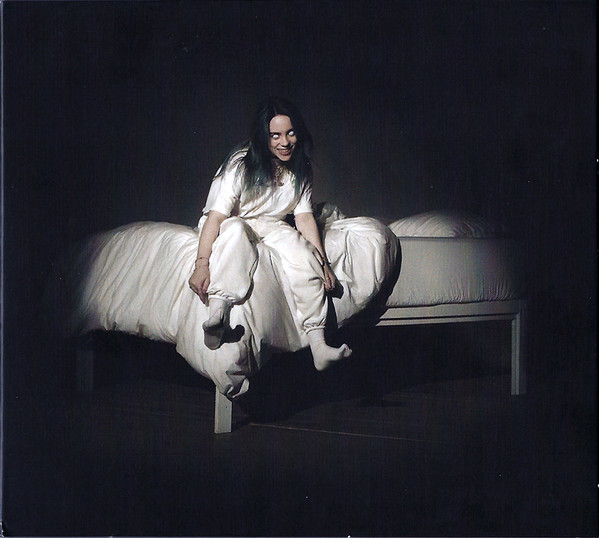
Billie Eilish, “When We All Fall Asleep, Where Do We Go?”
I consider this one of the best-recorded albums I have heard in a very long time. Which is remarkable considering it was recorded in a bedroom studio. It’s one of those unusual albums that manages to sound good whether you listen to it with a car radio or a top-dollar system. The music swings wildly between quiet and intimate and dancehall bombastic, often within seconds of each other. So this album is a real showcase for dynamics and features quite a lot of very deep bass notes.
Playing this with the Polk Audio L600 speakers proved to me how effective the bass port is, as the speakers played me a dimension of this album I didn’t know existed. When you least expect it, this album will output chest-pounding bass notes, and the L600s handled them with aplomb.

John Adams, “Harmonielehre” City of Birmingham Symphony Orchestra conducted by Simon Rattle
One of my favorite things to do while listening to symphonic music is to picture where each instrument is on the stage. Can I see the strings, or the horns, or the tympani in the back? Even more thrilling for me is to watch a series of notes travel across and throughout the stage of instruments; hearing a chord begin with the horns situated stage right and then seeing it swirl to the left through the strings and finish with the drums and percussion at the rear of the stage fascinates me.
There are a lot of such “traveling notes” in John Adams’s music, and his Harmonielehre work in particular features wide variations of dynamics, often building from a silent throbbing thrum to a magnificent and bombastic growl of brass and woodwinds. The Polk Audio L600 speakers excelled at portraying the soundstage and dynamics of this work, and many other symphonic pieces I listened to. The notes of the music were portrayed with no loss of timing or blurring; not once did the speakers call attention to themselves. It was just me and the music.
The Polk Audio Legend L600 speakers cost $4,000 per pair. They sound great for music and home theater and produce amazing bass. Highly recommended.
- Bass. Lots of bass. You’ll hear bass energy in movies, music, and TV shows you didn’t know was there.
- The low-frequency capabilities of these speakers make them excellent for both home theater and music playback.
- Can be driven by a wide variety of amplifiers, and you can vary the sound with bi-amping and bi-wiring.
- Can be extended for surround-sound home theater with the L900 Height Modules.
- They can sit on rubber feet or spikes, which can be adjusted to fine-tune the placement of the speakers.
- A full set of drivers for a full SDA implementation; to get that you have to pay $2,000 more for the L800s.
The Polk Audio Legend L600 speakers showed me just how much music I have been missing in my life. They produce prodigious bass with clever cabinet design, as opposed to complicated powered woofers, so you can get full-range sound without having to add and tweak subwoofers to your system. They are heavy, substantial, and easier to drive than their size suggests. And they look great to boot.



